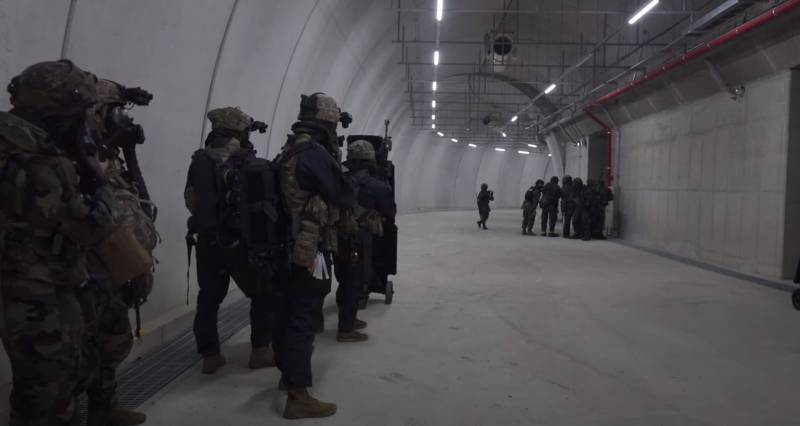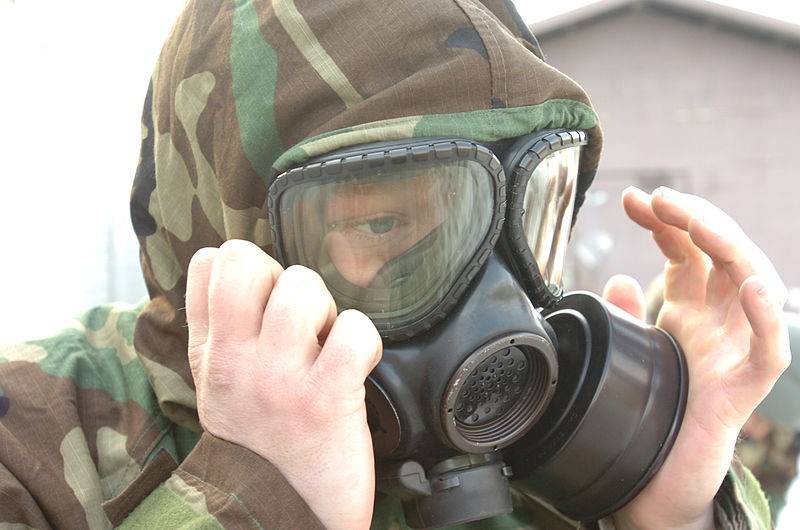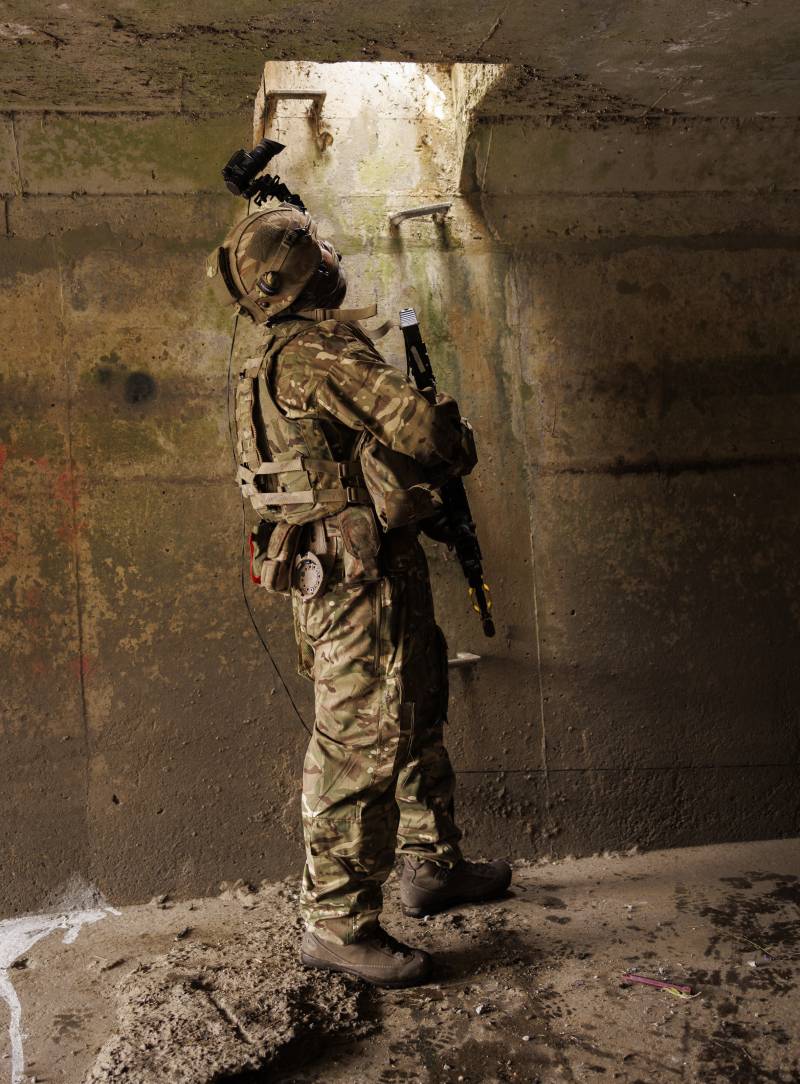Dungeon Soldiers: A New Handwriting of the Armies of the World

Koreans and Americans are mastering the skills of storming North Korean nuclear facilities
Underground war
Dungeons have been used in military affairs for centuries. Even before our era, tunnels were used for hidden mining of fortifications and castle walls. Over time, the tradition did not disappear, but became the lot of semi-partisan formations and terrorists who are trying to react asymmetrically to the technical superiority of the enemy.
The experience of Syria is noteworthy, in which underground passages have existed since time immemorial. The soil here is soft, does not crumble, underground waters lie deep enough, which allows digging hundreds of meters of tunnels. In some cities of Syria, there is no need to dig anything - in Homs, for example, four years before the war, they created an extensive network of passages and water conduits. Naturally, anti-government forces and terrorists did not fail to take advantage of this. In Damascus, a multi-kilometer tunnel from the Kabun region to Jobar was discovered. The first was under the control of the government, the second - under the terrorists.
The militants use underground passages not only for communications and access to the rear of the troops, but also for a banal mine war. To undermine an important facility, hundreds of meters of tunnels are torn off and tens of tons of explosives are laid. According to this scheme, the Carlton hotel and the barracks in Aleppo were destroyed in 2014, and several large checkpoints of government troops were blown up.
It is very difficult to deal with such moles. To protect important objects, it is necessary to dig ditches up to 15 meters deep. For example, for the Syrian army air defense command building in Damascus, an anti-tunnel ditch half a kilometer long and 12 meters deep had to be equipped. But even this is not enough - in some areas, the militants burrow up to 30 meters.
An interesting way to detect diggers has been tested by government forces. The protected object is surrounded by pits up to 15 meters deep with an interval of 2 meters from each other. A plastic pipe is inserted into each and covered with sand. So as soon as the sand begins to decrease, it means that it is restless in the depths.
In the government army, they were forced to create tunnel search groups and reconnaissance and destruction units. The fighters are armed with ground-penetrating radars and listening devices, analogues of stethoscopes. Underground warfare skills are well mastered by terrorists in Afghanistan and Iraq.


Koreans and Americans are mastering the skills of storming North Korean nuclear facilities
Israeli soldiers can tell a lot about underground wars. Palestinians from Hamas learned how to lay cross-border tunnels, through which they freely moved on motorcycles. Everything was done according to science - lighting throughout the passages, rooms for rest and storage of explosives, as well as mandatory forced ventilation.
As a result, underground vulnerability forced Israel to build a "smart wall" on the border with the Gaza Strip, equipped with a system of seismic sensors and sensors. As stated, underground protection should protect Palestinians from undermining.
Examples of the use of underground tunnels, galleries and other passages can be called endlessly. Here is the experience of the Great Patriotic War, and the Vietnam War, and the experience of a special operation in Ukraine. The battles in the underground premises of Azovstal once again raised the issue of special training of fighters for the extreme conditions of the dungeons.
Dagger distances and dusk
Regular troops also learned to bury equipment and weapons.
The Americans consider the multi-kilometer underground tunnels of North Korea to be a big problem. There were rumors that in the 70s and 80s, the communists dug a tunnel under Seoul itself. It was enough just to lay a nuclear charge under the capital, and the city of many millions would cease to exist.
The South Korean military considers this a fiction, however, they pay tribute to the level of security of the underground tunnels of their northern neighbors. At least three air bases are completely hidden underground - in Wonsan, Changjin and Onchun. Since 2004, the DPRK has been building underground bunkers for 1,5-2 fighters right near its southern borders.
As a result, any self-respecting NATO army should be able to fight underground. As difficult as it may seem in reality.


The M40 field mask should become an important element of the equipment of the NATO underground attack aircraft
It is difficult to think of more difficult conditions for combat than dungeons. Lack of artillery support, narrow passages, darkness and heavy air. Poor ventilation makes small arms weapon also a chemical agent - powder gases do not erode and affect personnel. Each shot sounds like thunder, and a grenade explosion, even at a safe distance, threatens with a heavy shell shock. Communication problems in closed galleries also bring a special flavor to combat encounters.
Do not forget that underground galleries are not always dry and clean. Often you have to fight in the sewers, which are dotted with cities. If the rebels and terrorists can afford to fight in the sewage, then why can't a NATO soldier be capable of such a thing?
At the Warrior Shield exercise last spring, the Americans, together with the Koreans, practiced techniques for storming underground tunnels. We must immediately make a reservation that taking wormholes is not only very difficult, but also allows attack aircraft to go deep into the enemy rear. Unless, of course, everything goes well for the attackers.
During the Warrior Shield, the military tested several solutions.
First of all, the M40 field mask, designed to protect against weapons of mass destruction. It turned out that the mask is quite effective against powder gases mixed with sewer stench. It is especially interesting how the masks will be combined with night vision devices, which are vital in the dungeons.
Sledgehammers, power cutters and plasma cutters have been tested to break into armored doors and other infrastructure. The vanguard of the attacking columns is protected by heavy bulletproof shields on wheels. Not without modern technology. For obvious reasons, GPS underground is not available, and without accurate navigation and target designation, American soldiers are not ready to fight. Special pedometers for each unit allow the commander to track the location of units in the underground wilderness.
remote controlled Robots for mine clearance and reconnaissance were also tested during the integrated exercises Warrior Shield. Directly during the maneuvers, the techniques and skills of storming the control centers of nuclear facilities in North Korea were practiced.



In the UK last summer, exercises were also held to storm underground fortifications.
Not only South Korea and the United States, but also France, Great Britain and even Austria joined the training program for underground fortification attack aircraft. It seems that this is becoming a trend in NATO countries.
The British from the 21st Engineer Regiment last summer practiced storming underground fortifications. Apparently, under the impression of the capture of Mariupol by the Russian army. A little later, military engineers consolidated their skills along with the 8th engineering brigade during the Highrise Poacher tactical maneuvers. One of the initiators of the exercise, Sergeant Mottley, said in an interview:
It is noteworthy that during the exercises, the military found know-how - they welded wheels to medical stretchers in order to reduce the burden on rescuers on the rise.
The underground games of potential adversaries indicate that NATO is seriously and in detail comprehending the experience of military operations in Ukraine and other regions. Buried gallery assault exercises may look naive, but they carry a clear threat. In the foreseeable future, fighters of the Armed Forces of Ukraine will definitely be involved in the maneuvers.
As a result, the Russian army may face problems when storming large cities and repelling attacks. Specialized units for smoking out underground rats of the enemy will not be superfluous at all in the Russian army. Moreover, our military gain combat experience not at all during exercises, but in an extremely tough combat situation.
Information